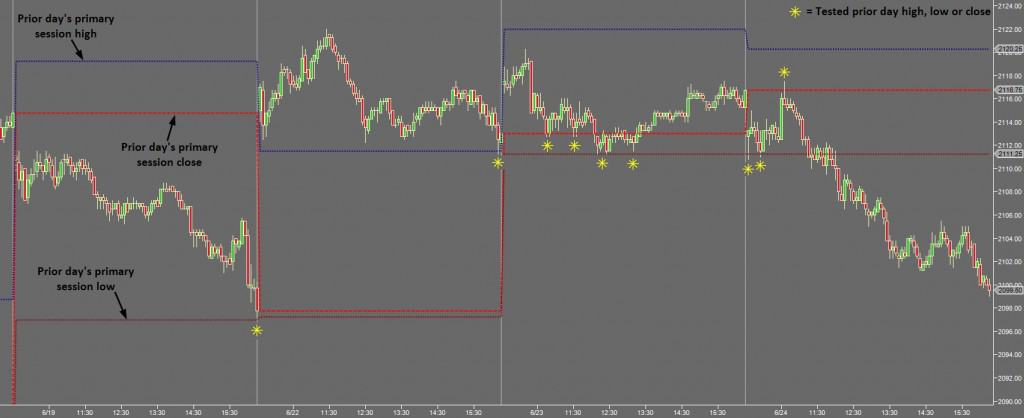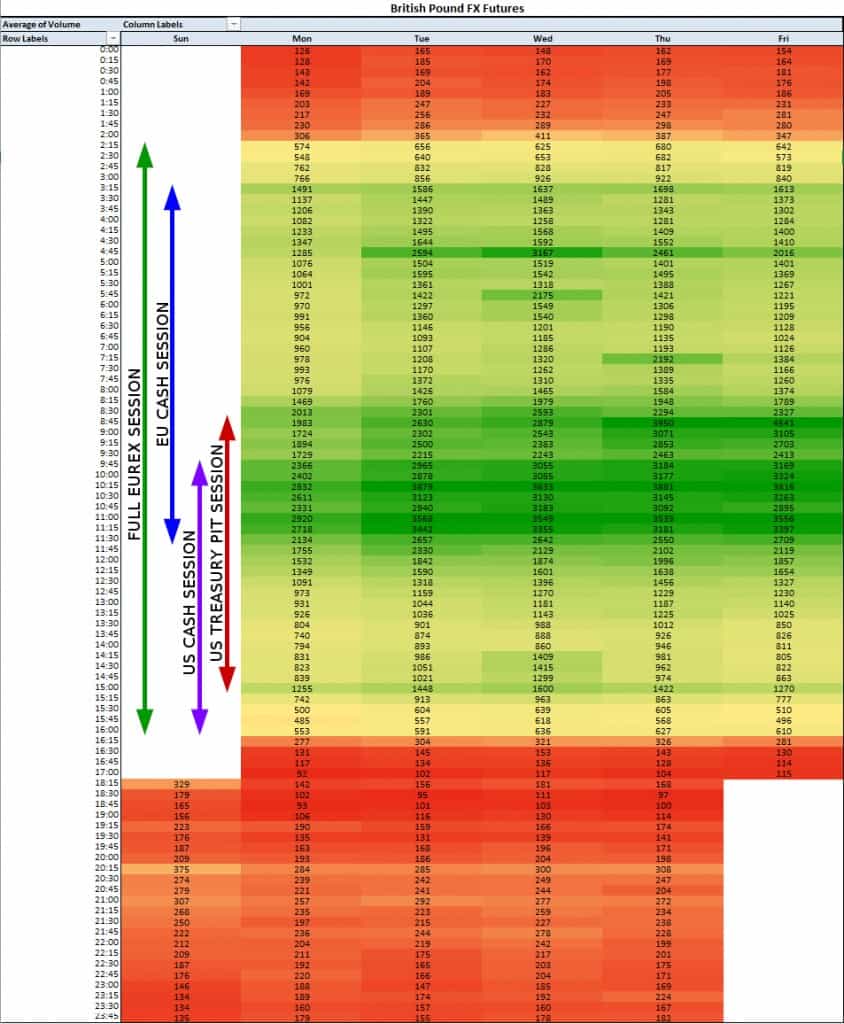One big issue that I’ve found frequently comes up when talking to traders, is when they are tracking market behavior they fail to differentiate between primary sessions and overnight sessions for futures products. Now of course,
it can be useful to chart a 24-hour or full electronic exchange session.
However, charting the right session times in futures for the primary session of the market you are trading can go a long way towards figuring out what it’s trying to do.
Why Non-Primary Hours Are DifferentNon-primary or “electronic” trading hours have two major differences to the main session for an instrument. The first is that because a futures product is a contract traded on an underlying market (for example a stock index future on a basket of stocks), any trading going on in the future when the underlying market is not fully open is going to be a proxy to the real market. In other words, the trading that goes on in futures outside of primary hours, isn’t always going to be an accurate reflection of what the underlying market wants to do.
The second point is that the volume traded is generally much lower in the electronic session than it is in the primary session. This tends to result in either far tighter trading ranges when interest is lower or accentuated moves due to the thinner book when there’s something that needs to be priced in. Another really great example of this is in sessions where the market is open but there’s a major holiday somewhere in the world. Many times there’s very little movement, but sometimes the thinner market leads to significant directional movement.
Masking The Important ActivityAs a result of these differences, what you see on a full session chart has the potential to mask important technical features of a market. Which moves have happened as a result of changes in the price to the underlying market for example, are likely to be far more indicative of future movement and yet it might not be immediately clear which these are on a full session chart.
The actual volume traded is also likely to have an impact on your charts. If you use volume profiles, although the additional less important data is far smaller in comparison to the primary RTH data, it will still have an impact on the overall distribution calculated by your platform.
But perhaps of greater impact is felt by traders who use either tick or volume-based charts for their timeframe which in turn is used to generate setups. Many trade plans used in Trend Jumper and Counterpunch use tick charts for example. The result of using overnight data is that setups have the potential to be artificially large due to the fact that markets can move directionally on far fewer trades/less volume outside of their primary sessions.

Additionally, it’s easier to identify session derived extremes in price, which markets are likely to retest and respect in the future. Although it is possible to find indicators on some platforms that allow you to specify the times for the open/high/ low/close you wish to have automatically drawn based on, it’s far more common to only have the option to show this for the current session. Fortunately however, most platforms do allow you to change the session displayed.
Selecting Your SessionSelecting the correct primary session is usually fairly straight forward. You can look at the product’s exchange webpage where it often gives the pit or open outcry session. You could also find the information for the primary session by doing a web search on the primary market hours for the underlying market. For example, the E-mini S&P 500 (ES) is a US stock index product. The primary market hours for the NYSE are 9:30 am-4:00 pm EST and so this is the primary session for the ES (although 9:30 am-4:15 pm EST are frequently used).
When looking at Forex futures it’s not quite as straight forward. You could chart sessions based on the hours of the major Forex centers globally (from forexmarkethours.com):
But equally if you were to do a volume analysis on a product (I’ve used the British Pound futures here) you might see that there’s a more relevant time window to use that spans across several of these.
 Charting The Right Session Times In Futures
Charting The Right Session Times In FuturesMany traders still don’t differentiate between primary and non- primary market sessions in futures trading and it’s my belief that they are missing a trick with this. If you don’t already do so, why not at least take a look at primary session only futures charts as a way to compliment your technical analysis.
Trade well.